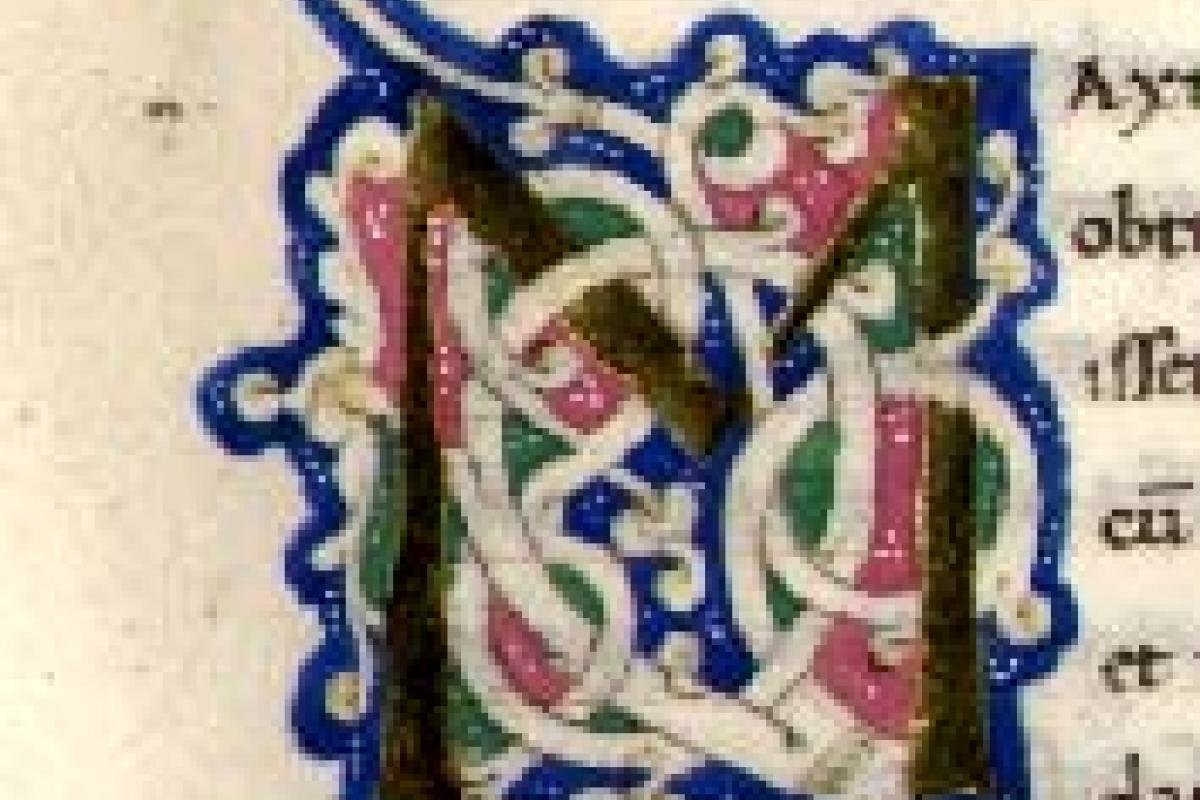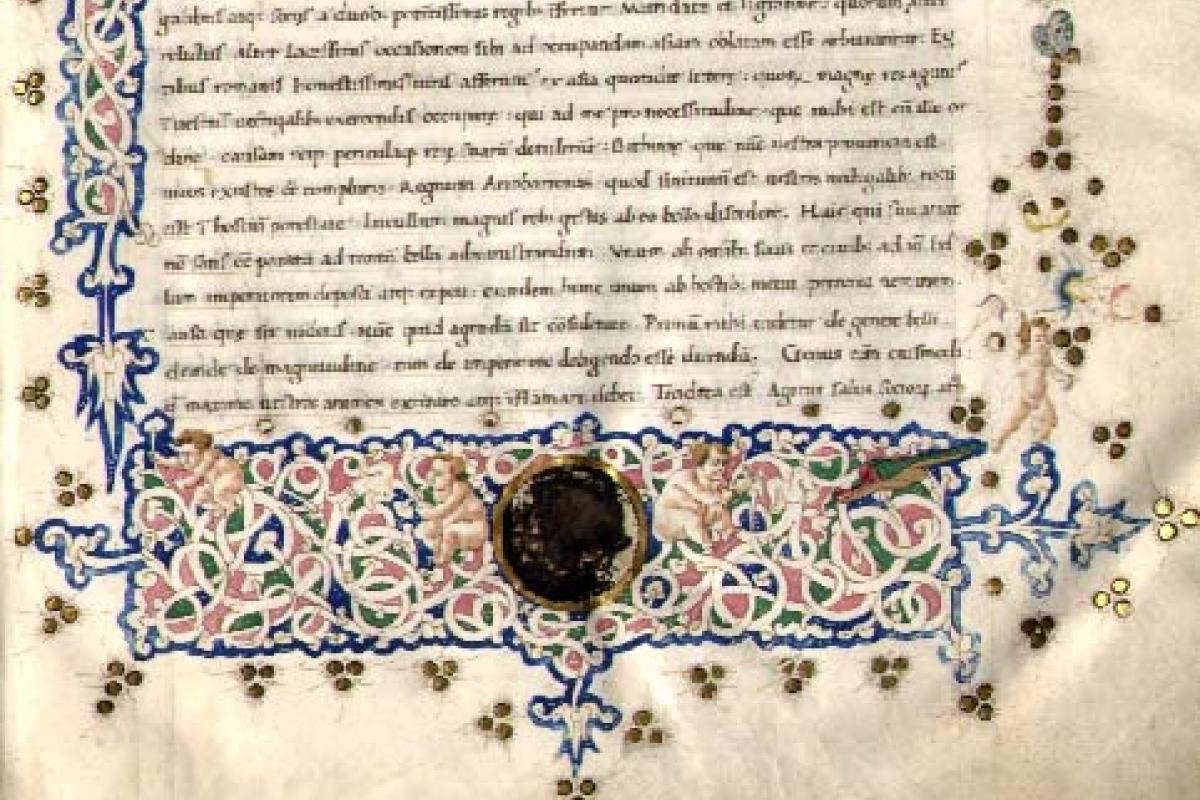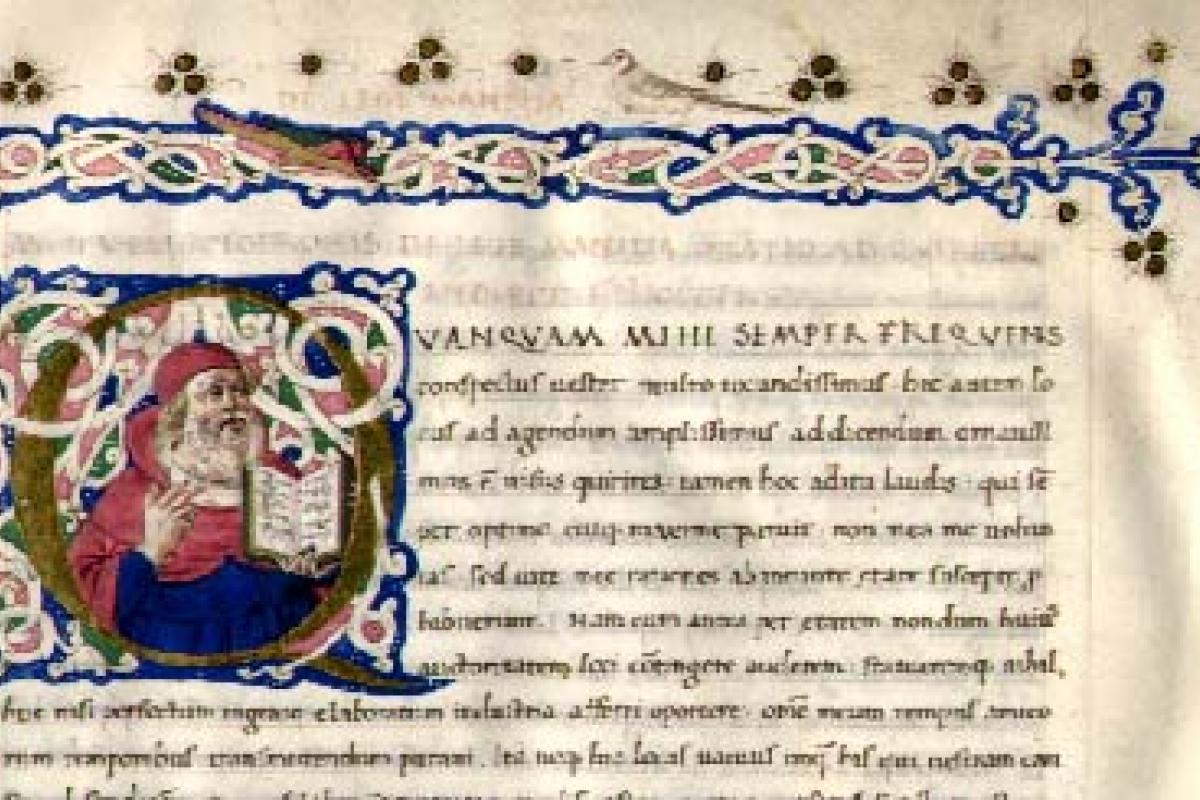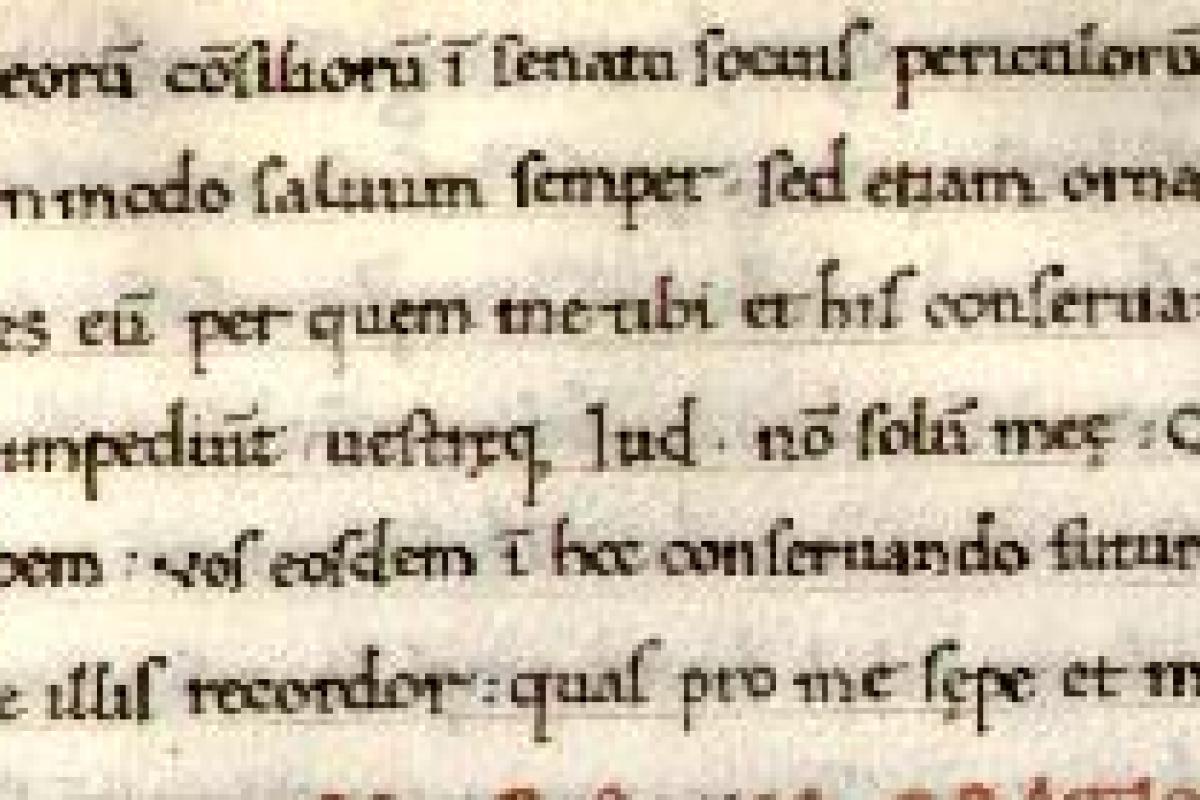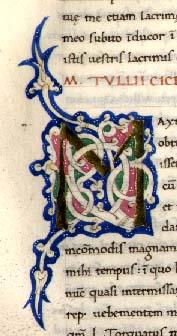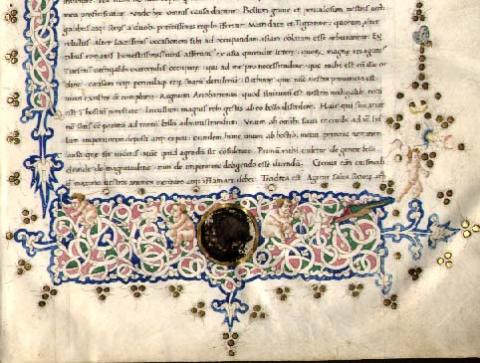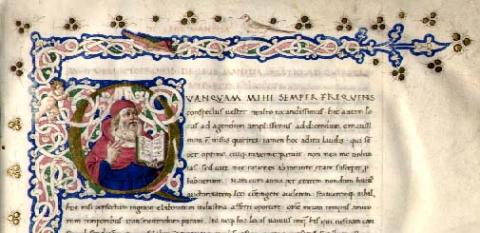Cicero, Orationes | Pseudo-Cicero, In C. Sallustium Invectiva and Oratio ad Romanos | Pseudo-Sallust, In M. Tullium Ciceronem Invectiva
Cicero, Orationes
Pseudo-Cicero, In C. Sallustium Invectiva and Oratio ad Romanos
Pseudo-Sallust, In M. Tullium Ciceronem Invectiva
Italian, ca. 1430-1470
Images include
fol. 1r: Border and historiated initial details
fol. 47v: Initial and script details
Language: Latin
vellum, paper
height 33 cm
width 23.5 cm
1 historiated initial and 33 large illuminated initials. 252 leaves of thin vellum and two flyleaves of paper (one front and one back). Catchwords have been written on the lower right of the verso of the last leaf of each quire. Folio size varies from 32.8 x 23.3 to 33 x 23.7 cm.
University of Oregon Special Collections and University Archives
Edward Burgess Manuscript Collection, Ms. 48
Diebold, William. The Illustrated Book in the Age of Printing: Books and Manuscripts from Oregon Collections. Portland, OR: Douglas F. Cooley Memorial Art Gallery, 1993, p. 18 - Quoted with permission
The large size and rich decoration of this manuscript (an initial in gold opens each of Cicero's orations) make it the most luxurious of the three Cicero manuscripts displayed here. One sign of the manuscript's luxury is the exceptional care with which it was produced, clearly evident in this opening.
The large area on the verso was left blank because the manuscript from which the text of number 3 was copied was incomplete, lacking the end of Cicero’s speech Pro Roscio. The scribe has written in the margin at this point deest reliquu[m]; "The rest is missing." Such concern for making clear a text's reliability is typical of Humanism. Novum, written sideways in the lower margin of this page, is a catchword, giving the first word of the next gathering. Catchwords were meant to indicate to the binder the correct order of the gatherings.
On the right-hand page are two more marks which were used in making the book. The small "n" in the left margin is a guide letter, the scribe's note to the illuminator that a capital letter is needed, in the right margin the scribe wrote P[ro] Q. Ligario, a note to the rubricator that with a new oration a new running head was called for in the upper margin.

